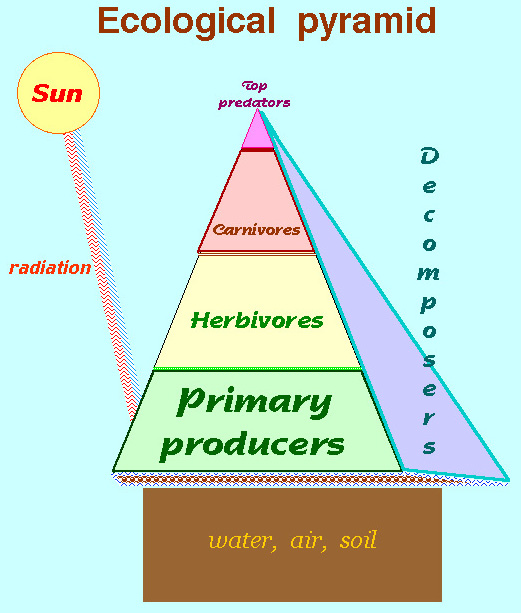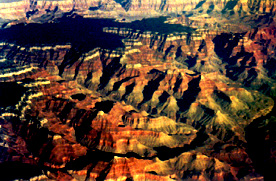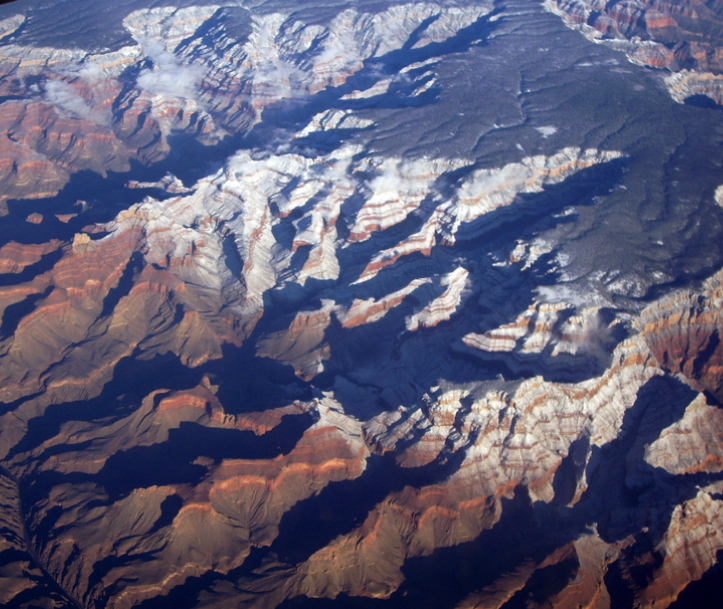 Meaning
Meaning 
What determines the value of places?
![]() Stewart Aitchison, The Grand Canyon: Window of Time,
Stewart Aitchison, The Grand Canyon: Window of Time,
 “I was on the rim of the world, nothing but space and raw rock before me. Golden-tan cliffs dropped to a crimson slope that led to vermillion ledges and more bluffs....This precipice was followed by another incline, long, greenish-gray, and gently levelling off into a broad bench. The bench led to the brink of a dark, foreboding inner gorge, a prison hiding the Colorado River.”
“I was on the rim of the world, nothing but space and raw rock before me. Golden-tan cliffs dropped to a crimson slope that led to vermillion ledges and more bluffs....This precipice was followed by another incline, long, greenish-gray, and gently levelling off into a broad bench. The bench led to the brink of a dark, foreboding inner gorge, a prison hiding the Colorado River.”
“You cannot see the Grand Canyon in one view.”
Hear it Ferde Grofé The Grand Canyon Suite !

“It is not to be comprehended in a day or a week, nor in a month. It must be dwelt upon and studied, and the study must comprise the slow acquisition of the meaning and spirit of that marvelous scenery.”
John Wesley Powell & Clarence Dutton
“The Canyon seems to be relatively young, perhaps between 1.7 to 6 million years old. That’s a mind boggling amount of erosion in such a short geologic time. All that can be said for certain is that a river system is responsible for downcutting. Other kinds of erosion, such as frost wedging, widen the Canyon. The stairstep profile of the Canyon to due to the varying hardness of each rock layer: softer ones form slopes the other harder layers tend to be cliffs.”
“To view the Grand Canyon is to peer through a window of time. The scene is fraught with contradictions, inconsistencies, and unresolved questions. As conservationist John Muir wrote many years ago, “the whole cañon is a mine of fossils...forming a grand geological library.”
“the oldest layers (Proterozoic Era), those exposed at the very bottom, date back 1.7 billion years before the present, an incomprehensibly long time ago.”
“An ocean invaded and muds, sands, and limy muds accumulated for another 300 million years to a thickness of 12,000 feet (the Grand Canyon super group).”
“Geologists have since determined that the Kaibab Plateau was uplifted long before the river carved the Canyon through it.”
“Maybe more than one river was involved.”
Mesozoic rocks do not exist in the Grand Canyon, as they were eroded away, and persists only in Bryce or Zion park’s formations.
So the canyon is largely the incomplete remnants of the Paleozoic Era, including the Precambrian and Cambrian changes of life on earth.
Stewart Aitchison, The Grand Canyon: Window of Time, (Mariposa, Ca.: Sierra Press, 1999.), pp. 11, 26-27, 49.
This page was recreated, by J. Siry.


